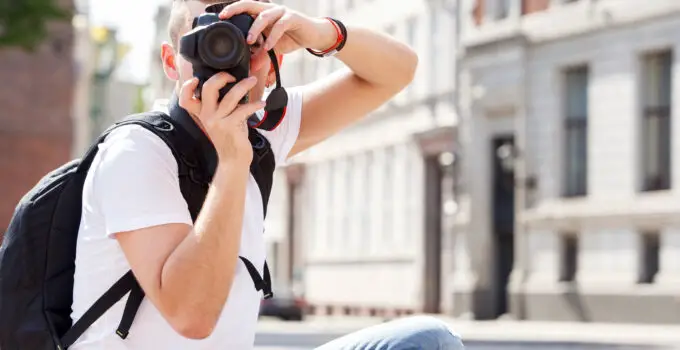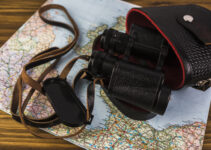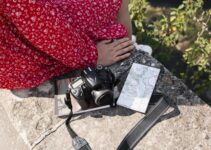What is regular bag?
A regular bag, often referred to in various contexts, typically means a standard or common type of bag used for everyday purposes.
In a general sense, it’s a simple, functional container designed to carry items. These bags come in various forms, including tote bags, backpacks, and shoulder bags, and are usually made from materials like fabric, leather, or synthetic materials.
They are distinguished by their straightforward design and practicality, lacking specialized features or elaborate styling found in more niche or designer bags.
Regular bags are often used for carrying personal items, groceries, or work essentials, and their simplicity makes them versatile for different situations.
Whether for casual use or light carrying needs, a regular bag offers convenience and accessibility in daily life.
Is it it worth to turn a regular bag into a camera bag?
Things to know before turning a regular bag into a camera bag?
How to turn regular bag into a camera bag?
7 Steps to turn regular bag into a camera bag
5 Methods to turn regular bag into a camera bag
5 Benefits to turn regular bag into a camera bag
Related faq’s
What materials are needed to convert a regular bag into a camera bag?
Thus to convert a regular bag into a camera bag, you’ll need several materials:
- Foam Padding: For cushioning and protecting your camera gear.
- Fabric Dividers: To create compartments for different pieces of equipment.
- Velcro Strips or Fabric Glue: To secure the dividers and padding inside the bag.
- Waterproof Spray or Rain Cover: To protect your gear from moisture.
- Scissors, Ruler, and Measuring Tape: For cutting and fitting materials.
- Sewing Kit or Glue Gun: Depending on whether you prefer sewing or using adhesive.
These materials allow you to customize the bag’s interior, ensuring it provides adequate protection and organization for your camera equipment.
How do I measure the bag for foam padding and dividers?
To measure your bag for foam padding and dividers:
- Interior Dimensions: Measure the length, width, and height of the bag’s interior.
- Compartment Sizes: Determine the dimensions of each compartment you want to create based on your camera gear.
- Cutting Foam: Use these measurements to cut foam padding to fit the base, sides, and any areas where additional cushioning is needed.
- Dividers: Measure the areas where you want to place dividers and cut fabric or foam to the appropriate sizes.
Accurate measurements ensure that the padding and dividers fit snugly and effectively protect your gear.
Can I use any type of foam for padding, or is there a specific kind required?
Thus while most types of foam can be used, it’s best to choose:
- High-Density Foam: Provides better cushioning and protection against impacts.
- Closed-Cell Foam: Offers better durability and moisture resistance.
These types of foam are commonly available at craft stores or online and are ideal for creating a protective interior in your bag. Avoid using soft, low-density foam as it may not provide sufficient protection.
How do I attach dividers and padding inside the bag?
To attach dividers and padding:
- Fabric Glue: Apply fabric glue to the back of dividers or padding, then press them into place inside the bag. Allow the glue to dry completely.
- Velcro Strips: Attach one side of the Velcro to the bag’s interior and the other side to the dividers. This allows for adjustable and removable compartments.
- Sewing: For a more permanent solution, sew the padding and dividers into place using a strong needle and thread.
Ensure that the padding and dividers are securely attached to prevent them from shifting or moving.
What should I do if the bag doesn’t have a rigid structure?
If your bag lacks rigidity:
- Reinforce the Base: Add a piece of cardboard or additional foam to the base of the bag to provide extra support.
- Stiffen the Sides: Use thicker foam or additional padding to reinforce the sides of the bag.
- Check the Construction: Ensure all added materials are securely attached and that the bag maintains its shape with the added weight.
Reinforcing the bag’s structure helps maintain its shape and provides better protection for your camera gear.
How can I make the converted bag weatherproof?
Thus to make the bag weatherproof:
- Apply Waterproof Spray: Use a waterproof spray to treat the exterior of the bag, focusing on seams and zippers. Follow the product instructions and allow it to dry completely.
- Use a Rain Cover: Purchase a rain cover that fits over the bag and store it in an accessible pocket.
- Waterproof Pouches: Place sensitive items like memory cards and batteries in waterproof pouches inside the bag.
These measures help protect your camera gear from rain, spills, and other moisture-related issues.
How do I ensure my camera gear is well-organized inside the bag?
To ensure proper organization:
- Create Custom Compartments: Use dividers to make separate compartments for each piece of gear, ensuring they fit snugly without excess movement.
- Label Compartments: Consider labeling or color-coding compartments to easily identify where each item goes.
- Adjust as Needed: If you acquire new gear or change your setup, adjust the dividers and padding accordingly.
A well-organized interior allows for quick access to your equipment and helps prevent damage from shifting or bumping.
Conclusion
Thus, turning a regular bag into a camera bag is a practical and cost-effective solution for protecting and organizing your camera gear.
By adding foam padding, fabric dividers, and weatherproofing features, you can customize the bag to fit your specific needs.
Reinforcing the bag’s structure and ensuring proper organization further enhance its functionality. This DIY approach not only extends the life of an existing bag but also offers a personalized solution tailored to your equipment.
With careful planning and execution, you can transform a regular bag into a versatile and protective camera bag that meets both your practical and stylistic preferences.







